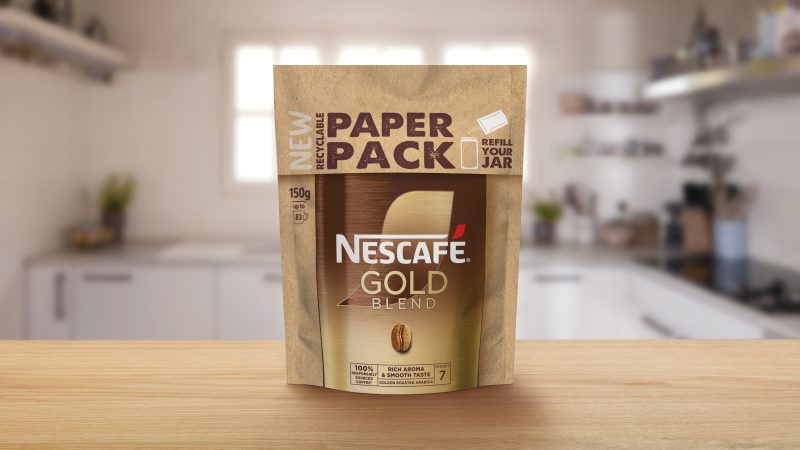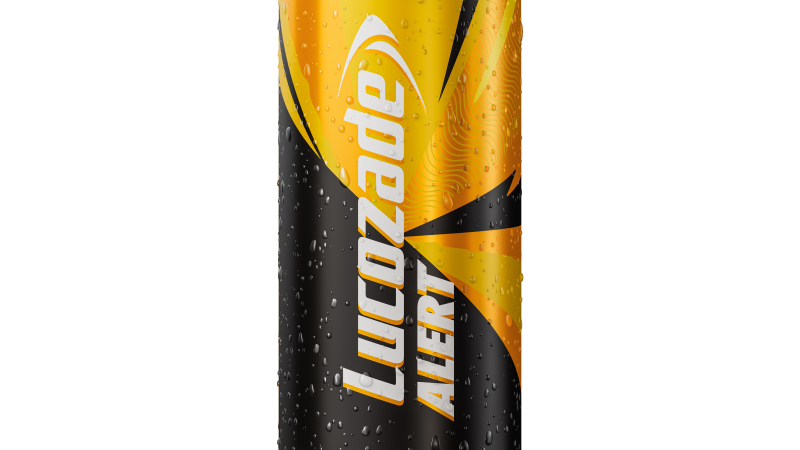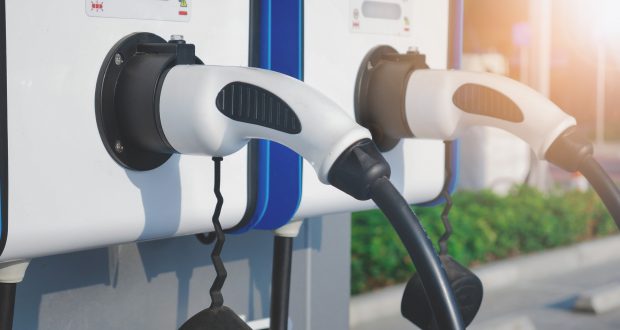Focus on forecourt signage with GE Current

It’s safe to say that the petrol station forecourt can be both its most powerful marketing tool and its greatest marketing challenge when it comes to attracting passing motorists. For this reason, forecourt design, branding and signage have become both a science and an art for companies seeking to maximise revenue from every site. Illuminated signage is a key part of any organisation’s brand arsenal, helping the business stand out and delivering a promise of product and service quality. However, the human eye is incredibly sensitive and our brains can often detect the slightest discrepancy in shape or colour; something feels “off” even if we can’t consciously recognise the source of our discomfort. This can lead to negative brand perceptions that have a tangible and lasting impact on the balance sheet. The quality of branding and signage is therefore critically important but brand managers and procurement teams also have to balance the need for high quality and performance with installation, running and disposal costs throughout the life of each sign. Balancing this delicate formula, they must consider energy efficiency, reliability and carbon footprint in order to meet corporate sustainability targets set by the Board.
Extreme punishment: the unique challenges faced on the forecourt
In petrol stations, which are typically set apart from other structures and more exposed to the elements, weather conditions can significantly affect the longevity and quality of an illuminated sign. High winds and vibration can damage poorly constructed channel letters and boxes, whilst humidity and rainwater ingress can significantly compromise unprotected electronic components, causing expensive failures. Air pollution from high volumes of slow-moving traffic also presents an additional threat; sulphur dioxide (SO2) along with other particulates and halogens emitted from vehicle exhausts.
In a worst-case scenario, a petrol station chain might be tempted to choose a lower-quality specification for its illuminated signage, perhaps to shave down some of the build and installation costs in the short term. This can quickly prove to be a false economy!
In lower cost modules, the LED chip sits in a reflective cup which directs more light towards the illuminated face of the sign. The blue light emitted by the LED is corrected to white by a layer of yellow phosphor, held in suspension within an epoxy resin which covers the chip. However, with limited protection, the combination of SO2 and moisture corrodes the epoxy resin, reacting with the phosphor and tarnishing the reflective cup. This can result in significant light depreciation and colour shift, giving the illuminated sign or individual letters a patchy, blueish tint that makes the brand look shabby and old, potentially ruining the all-important first impression.
GE Current, a Daintree company, planned for this worst-case scenario when developing its 24V products. Each module was designed not only to satisfy the most stringent sustainability targets but also to ensure that any product in the portfolio could outperform the competition in even the most taxing environments.
The construction of Current’s 24V Tetra® modules features the company’s patented OptiLens™ X technology to offer robust physical protection, whilst distributing the light emitted across a wide 170-degree angle to achieve beautifully uniform illumination with fewer modules. An overmould offers a further barrier to the elements, preventing sulphur dioxide and moisture from coming into contact with the epoxy resin and causing any change to lumen output or colour temperature.
Tested (almost) to destruction
In order to reassure customers that their illuminated signage will stand the test of time, even in the busiest, most exposed petrol station forecourt, Current subjects every module to the harshest testing programme in the industry. Every module is burned for 6,000 hours and a battery of tests, grouped into twelve different categories, ensure that the modules burn brighter for longer in any situation.
For example, standard IP68 testing for water ingress requires the module to be submerged at a depth of 1m for 30 minutes. However, Current tests at a depth of 5m for one hour to ensure that the modules can withstand the wettest conditions. The modules are also tested under extreme temperatures (cycling 100 hours at +60°C followed by -40°C) as well as high humidity and even in a corrosive salt fog to ensure consistently high performance in coastal regions. However, for petrol stations, the accelerated sulphur test is perhaps the most important, in conjunction with the enhanced IP68 certification and high temperature, high humidity testing, as a predictor of the long-term effects of a highly polluted environment.
When testing the GE Current Tetra miniMAX module against a cheaper, lower quality competitor, the accelerated sulphur test revealed no degradation in the light output (measured in lumens) and only an 18 degree colour shift thanks to the OptiLens X and additional protection offered by the higher quality casing. By comparison, the cheaper product suffered a 9% lumen degradation following the 72-hour test as well as a 1200 degree colour shift. This degree of decline would certainly have had a visible impact on the appearance of the sign and would have required replacement.
However, as David Williamson, Sales GM, Europe for GE Current says, “Testing will only get you so far. The only way to really show how good your products are is to find a partner who will trust and work with you to prove it in the real world.” For example, GE Current has worked with Lightsign, experts in lighting and display technology, for more than 16 years and has developed a trusted partnership during that time which has enabled both companies to offer superior signage illumination to customers across Ireland.
David O’Sheehan, MD Lightsign explains, “Signage is still very much a relationship industry. Our customers rely on us not only to manage stock against highly sensitive deadlines during projects but they also want to work with us because we can connect them with the right suppliers and the latest innovation as well as offering informed, strategic advice based on our deep knowledge of the industry. Our relationships are built over years of collaboration so when we go into a conversation with prospective client, we are able to work as one team with the guys at Current.”
Helping Circle K reach a new milestone in Ireland
When Canadian convenience store chain, Circle K purchased the Topaz network of petrol stations in Ireland, Irish Prestige Signs was given the opportunity to tender for the rebranding of the 420 sites. “A global specification for illuminated signage had already been established by the European arm of the company so our proposal had to offer either significant quality improvements or financial savings in order to be successful,” explains Eamonn O’Shea, Director of Irish Prestige Signs. Having partnered with both Lightsign and Current for more than a decade, O’Shea worked closely with both companies to design a technical response that would not only perform as well as, if not better than, the standard specification but would also save Circle K money across the mandated 10-year useful life of the signs.
Each of the 420 sites required a range of illuminated signage, from main identifier signs (MIDs) and pylons, to channel letters and fully-illuminated canopies. In order to create a specification that would stand up to the harshest environments, the team swiftly moved from testing 12V solutions to designing solely with 24V Tetra LEDs throughout. This meant that fewer modules would be needed for each sign, shortening installation times and offering a more robust, long-lasting solution. The lower energy consumption and reduction in materials would also help Circle K achieve a higher sustainability rating against the total lifetime carbon cost of its signage.
Seeing is believing
In order to prove that Current’s 24V modules could indeed achieve the same quality of illumination as the European specification, the team created a mock-up of a fully-illuminated section of the proposed forecourt canopy featuring a set of channel letters. This allowed Circle K to independently verify Irish Prestige Signs’ claims of light output, build quality and energy efficacy, proving that the alternative proposed specification surpassed their brand requirements.
Once awarded the contract, Irish Prestige Signs had to work quickly and methodically in order to deliver the project within the agreed twelve-month timeframe. “We planned it incredibly carefully with Lightsign and Current to forecast all the necessary materials, components and build-time,” says Eamonn O’Shea. At its peak, the project saw the roll-out of new Circle K branding at 11 different petrol stations per week, with distribution managed by Lightsign in close partnership with the team at Current. In total, Irish Prestige Signs deployed 200,000 Tetra LED modules in 5,500 signs, turning the 420 blue and green Topaz petrol stations a vibrant Circle K red on time and within budget. “Circle K trusted us to improve on their specification for signage in Ireland so it made perfect sense for us to work with our own trusted partners to deliver the best possible results for them,” concludes O’Shea. “Working with Lightsign and Current gives us the confidence that we can offer our customers the highest-quality lighting innovation, whilst also helping them meet their sustainability obligations and cutting costs with rebranding programmes that are delivered on time and to budget.”
Savings that add up across the board
Petrol station brands will always be better served by considering the long-term costs of any individual site’s illuminated signage. By investing in LED solutions that are designed and comprehensively proven to be more durable and energy-efficient over the lifetime of the sign, network head offices and forecourt managers will save time, money, and the planet, whilst maintaining and building a positive brand image and customer base. By using fewer, robust LED modules to achieve uniform illumination, branding projects can be rolled out faster, with less need to call on the sign-makers to maintain or replace failed modules under warranty agreements. Finally, a longer lifespan and greater energy efficiency means that today’s illuminated signage offers greater long-term value, reducing the associated energy bills and disposal costs and helping brands meet their sustainability goals with little to no additional corporate effort required.
To learn more about GE Current’s lighting solutions for petrol stations, visit: gecurrent.com








